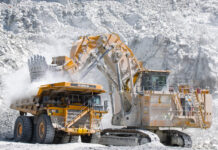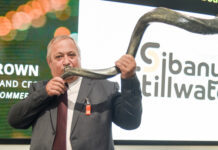
Ask any mining boss what causes evening sweats, and it’s probably not a posse of cute rodents, or tumps of seemingly unremarkable grasses.
Yet for Gold Fields and Sibanye-Stillwater respectively, the discovery of a group of endangered species of short-tailed chinchilla and the presence of a rare strain of buckwheat have probably been enough to cause more than a few sleepless nights.
In Gold Fields’ case – as has been widely reported – the discovery of an estimated 25 of the animals at its $1bn Salares Norte mine in Chile has had an almost comically outsized effect on developing the prospect, which it first identified in 2011 as its next big thing. It has spent about $5m researching and monitoring the animals – not even moving them – since about 2018.
Then, earlier this year, they vanished from one of the areas being monitored. You might think that would be good news. It wasn’t.
Their disappearance prompted Chile’s environmental watchdog to order an “urgent and transitionary measure” halting the dismantling of the chinchillas’ rockery (Rocky Area No 3). If Gold Fields can’t locate them – and if indeed they are there – relocate the animals over the next year it will have to relook at its entire mining plan sequence for Salares’s Agua Amarga pit.
Gold Fields CEO Mike Fraser says Chinchillagate raised the trade-off on whether to go underground or “create further surface disturbance”.
“If we go underground it will have lower impact on the chinchillas and (it) potentially gives us optionality on further underground exploration,” he says.
Gold Fields downplays the impact of the chinchillas, arguing that 90% of the overall value of Salares Norte sits in the Brecha Principal pit “which is what we are mining today”. Fraser says the part of the mine inhabited by the rodents accounts for just 10% of Salares Norte. So, “from an economics point of view it is not a material thing”.
Still, fascination with the issue – and fears that it could have a major impact on production targets – have done a fair amount of damage to Gold Fields’ share price since it first made headlines.
For Sibanye-Stillwater, already under acute financial strain over a drastically reduced palladium price, the presence of Tiehm’s buckwheat, described by the US Fish and Wildlife Service as an “imperilled plant”, has snarled up the Rhyolite Ridge project in Nevada, in which it has an option to take a 50% stake for $490m. The large, shallow lithium-boron deposit should be one of the first large-scale US lithium projects to enter production, and is key to Sibanye-Stillwaters’s ambition of becoming a global battery metals miner. If it goes ahead, that is.
Head of Sibanye investor relations James Wellsted says that at the stage they announced the investment, the buckwheat hadn’t yet been declared endangered. Ioneer, the Australian company that owns the prospect, is now doing a revised feasibility study which has been sent off for environmental approval.
Asked whether the grass could scupper the whole deal, Wellsted says not necessarily. “But maybe what we need to do – because it’s a huge area – is develop a bigger project than what was originally envisaged.”
Sibanye-Stillwater’s case in particular encapsulates the irony at the heart of global mining right now: that deposits of so-called green metals like lithium, copper and nickel may be that much harder to extract given a far more stringent focus on the environment.
“The whole point is that these metals are critical to the world meeting its climate change targets but at the same time there’s local resistance to projects being brought on, so you’ve got this tension,” says Wellsted.
Paul Miller, of mining consultancy AmaranthCX is more blunt: “It takes so long to make a discovery, but once you’ve made (one) there’s no guarantee that you can mine it from a regulation point of view.”
Luckily for Chile’s environmentalists, says Miller, it was Gold Fields that discovered the chinchillas. As a listed company and a signatory to the International Council on Mining and Metals (ICMM), a global standard that holds mining companies to account over social and environmental damage, it couldn’t just ignore the problem.
Notably, only 24 mining companies belong to the ICMM. While the majors like Anglo, BHP, Codelco and Vale are signatories, two thirds of the world’s mining companies are not, and aren’t necessarily beholden to the group’s commitment of sustainable mining.
Miller argues that either “someone else is going to mine it anyway and the West is going to lose access to those resources, or it’s not going to be mined at all and left in the ground, and the overall impact on climate is different. It’s helluva complex. The point is that all new mining projects are going to take much longer with much bigger financial risks.”
That complexity is evident in Gold Fields’ own relationship with the Chilean government and the country’s environmental authorities, which have taken a harder stance on the chinchilla issue than the state itself. “They would almost take the view that if mining didn’t happen they would be quite happy,” says Fraser.
“I don’t think it will create a sustainable problem on the project, but it does mean we have to be hypersensitive on how we engage with the agencies, and anytime there is potential for negative news they will certainly pick up on it,” he says.











